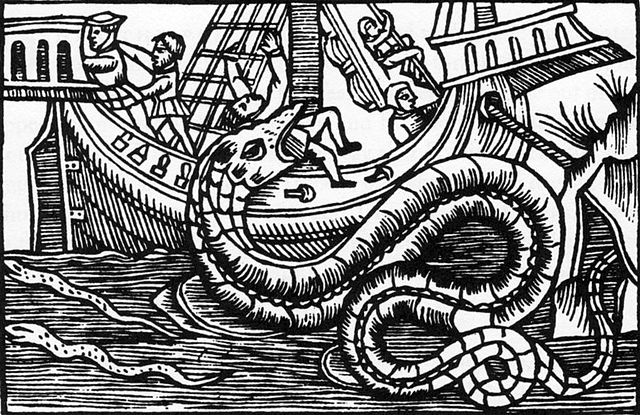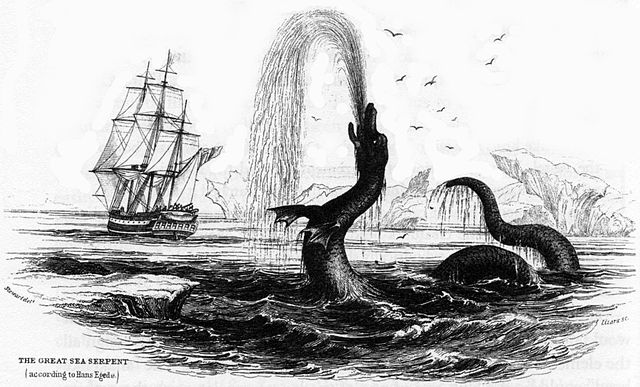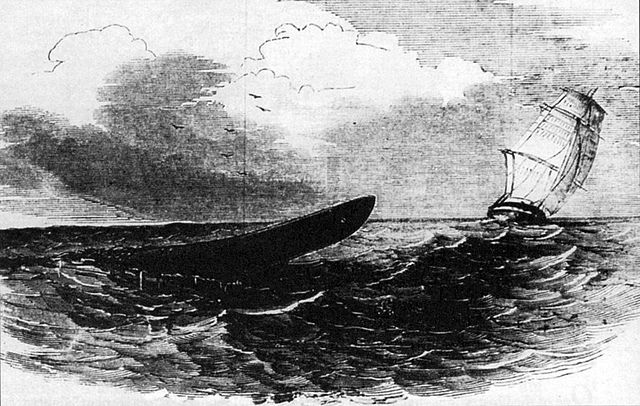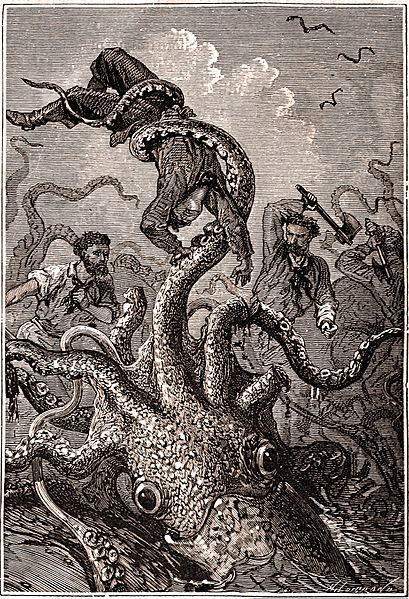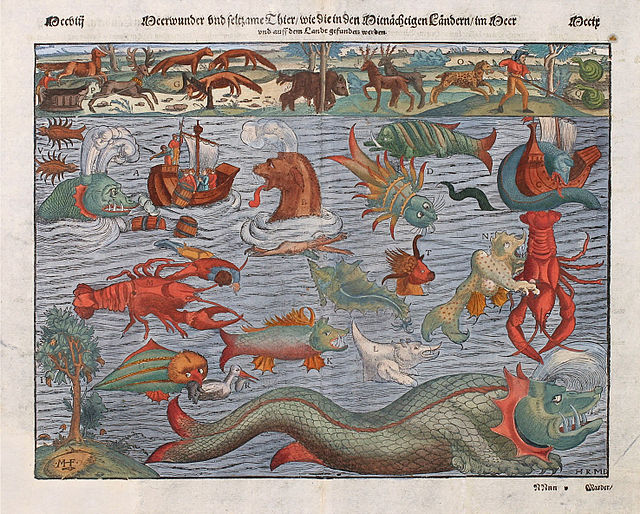A sea serpent is a type of sea monster described in various mythologies, most notably Mesopotamian (Tiamat), Judaeo-Christian (Leviathan), Greek, and Norse (Jörmungandr).
A sea serpent.―From Magnus, Olaus (1555). History of the Northern Peoples.
"The Great Sea Serpent (according to Hans Egede)".―Engraving c. 1843, signed by artist James Hope Stewart.
"Supposed Appearance of the Great Sea-Serpent, From H.M.S. Plumper, Sketched by an Officer on Board", Illustrated London News, 14 April 1849
Sea serpents, Ama Temple, Macao
Sea monsters are beings from folklore believed to dwell in the sea and are often imagined to be of immense size. Marine monsters can take many forms, including sea dragons, sea serpents, or tentacled beasts. They can be slimy and scaly and are often pictured threatening ships or spouting jets of water. The definition of a "monster" is subjective; further, some sea monsters may have been based on scientifically accepted creatures, such as whales and types of giant and colossal squid.
Picture taken from a Hetzel copy of Twenty Thousand Leagues Under the Sea.
Plate c. 1544 depicting various sea monsters; compiled from the Carta marina.
Sea serpent reported by Hans Egede, Bishop of Greenland, in 1734
The St. Augustine Monster was a carcass that washed ashore near St. Augustine, Florida in 1896. It was initially postulated to be a gigantic octopus.

